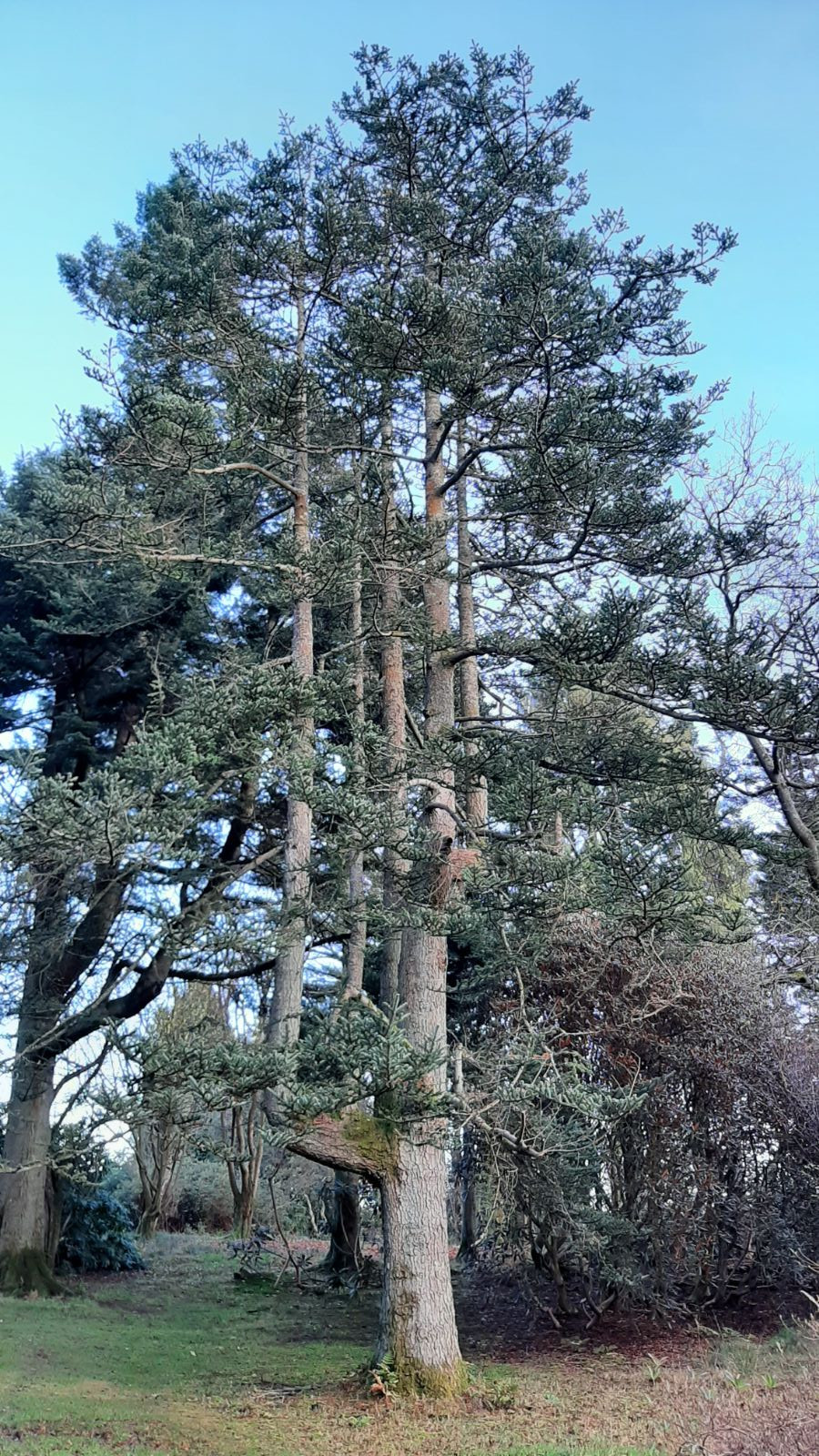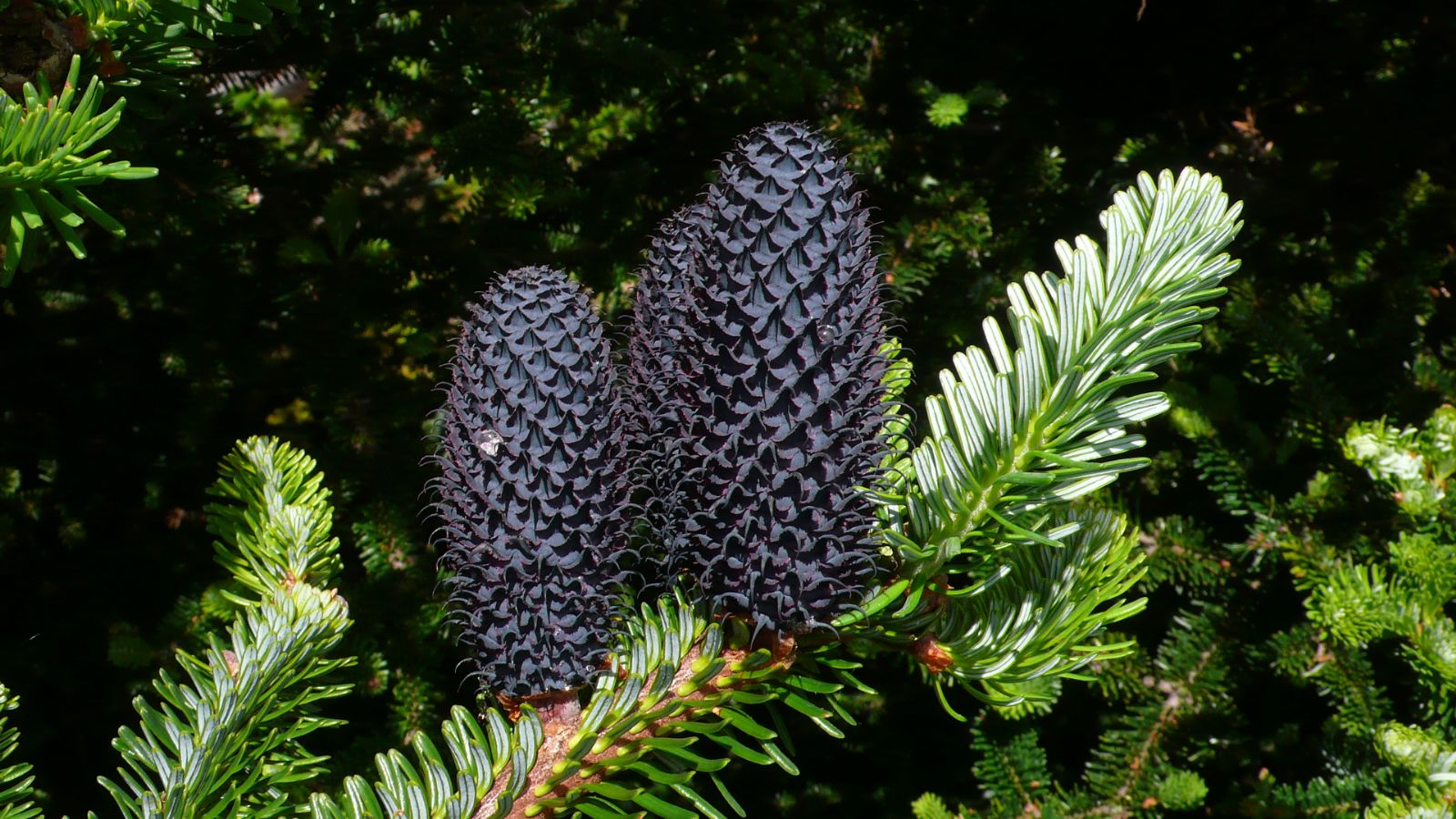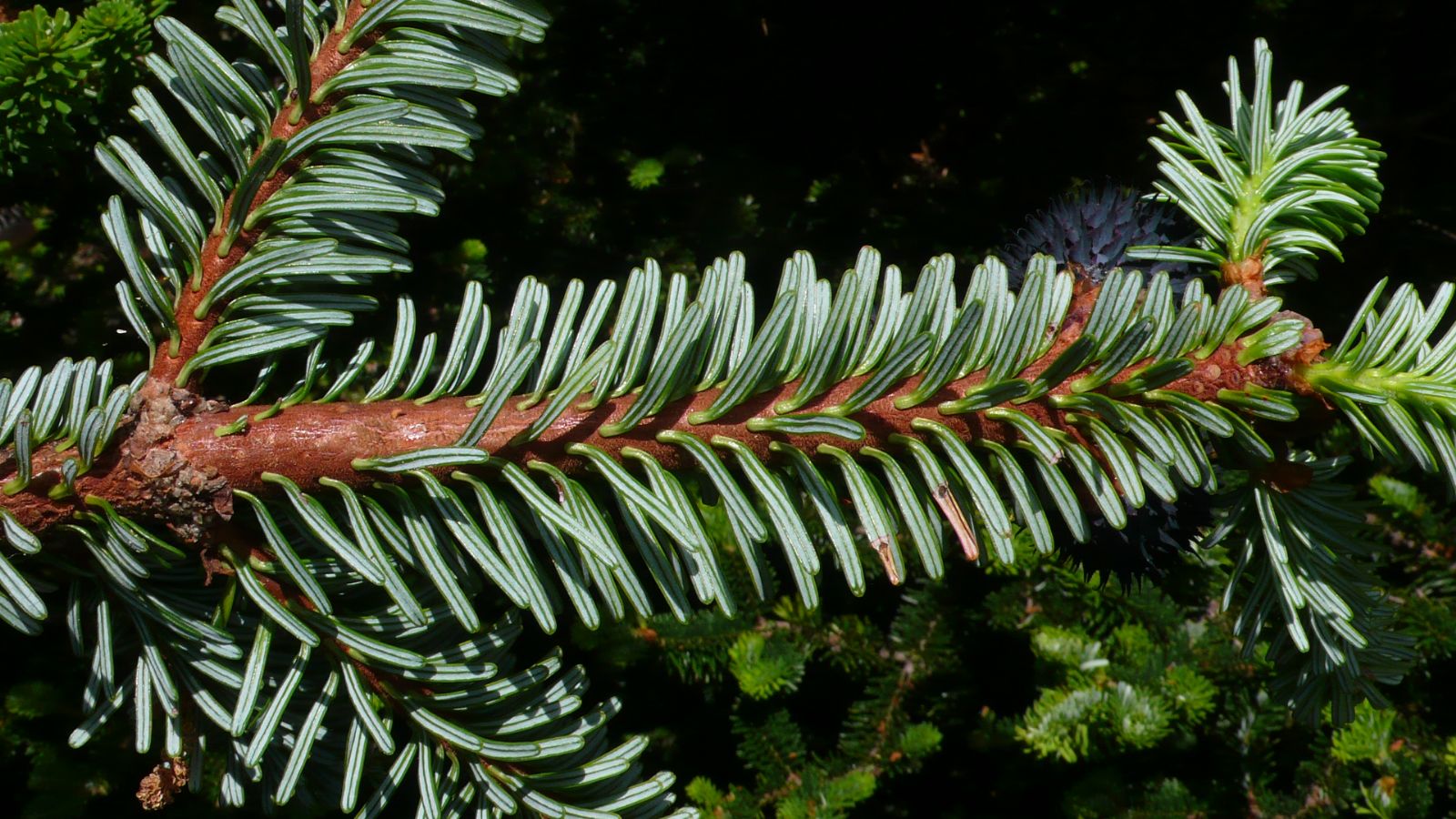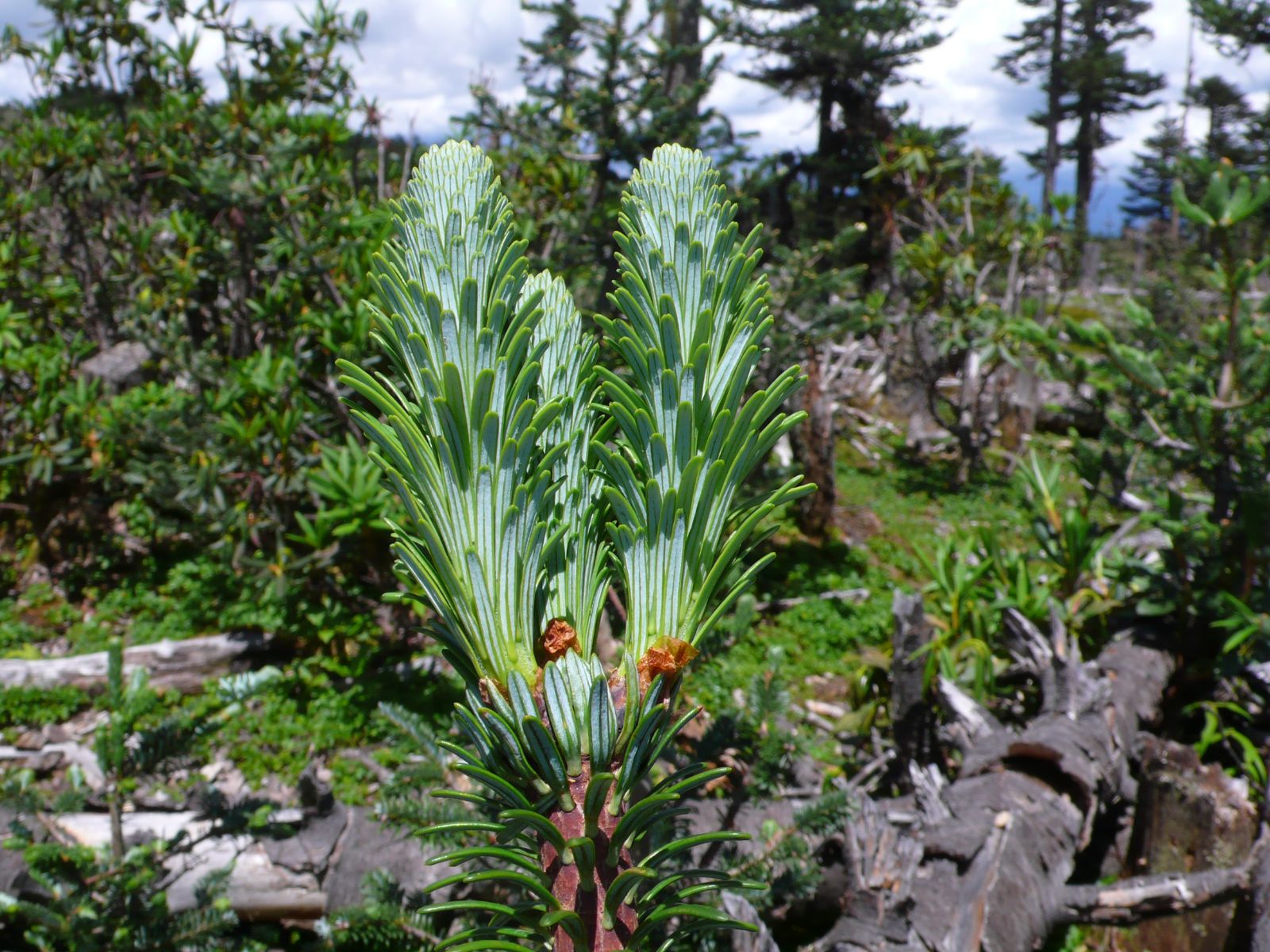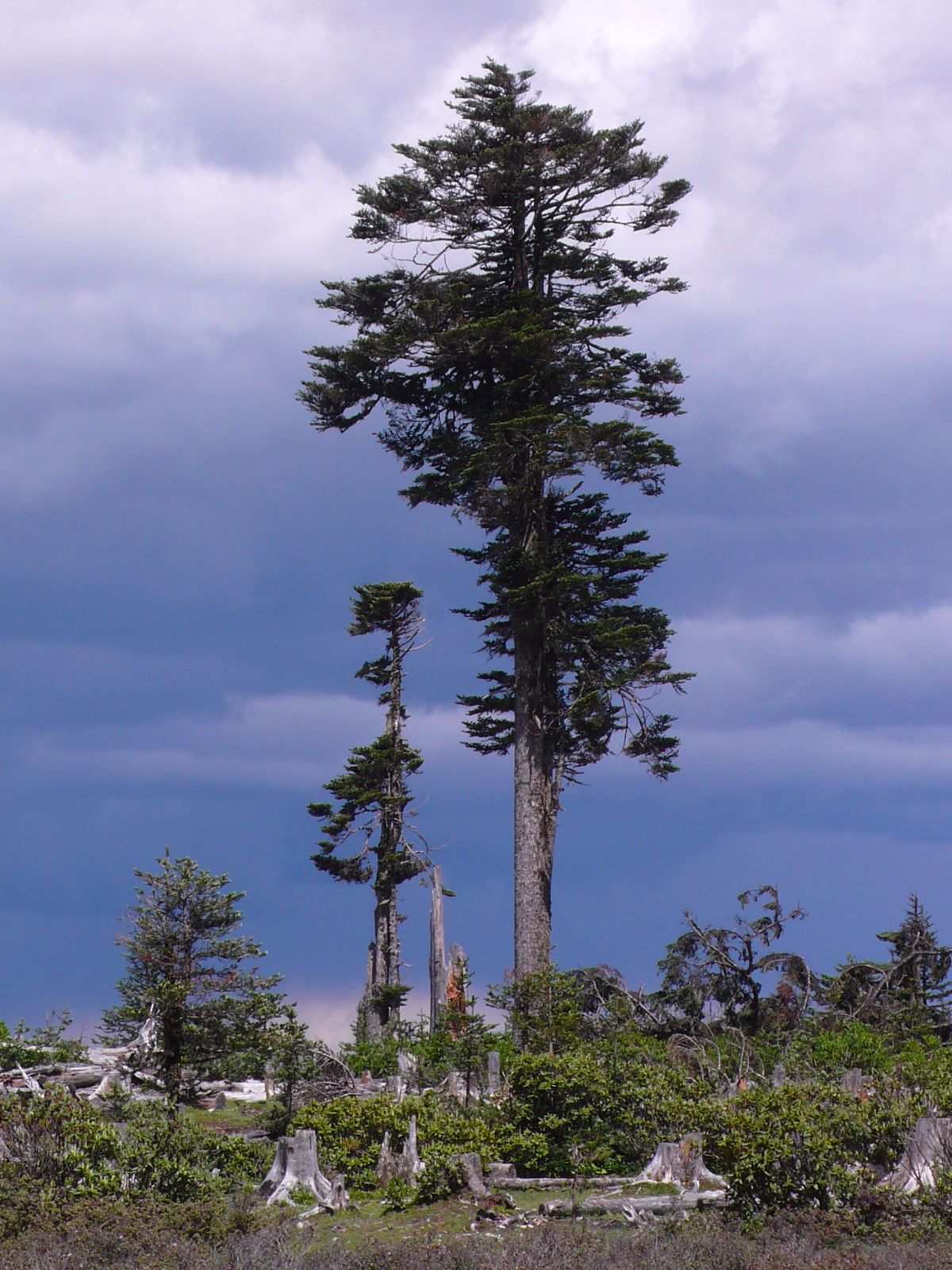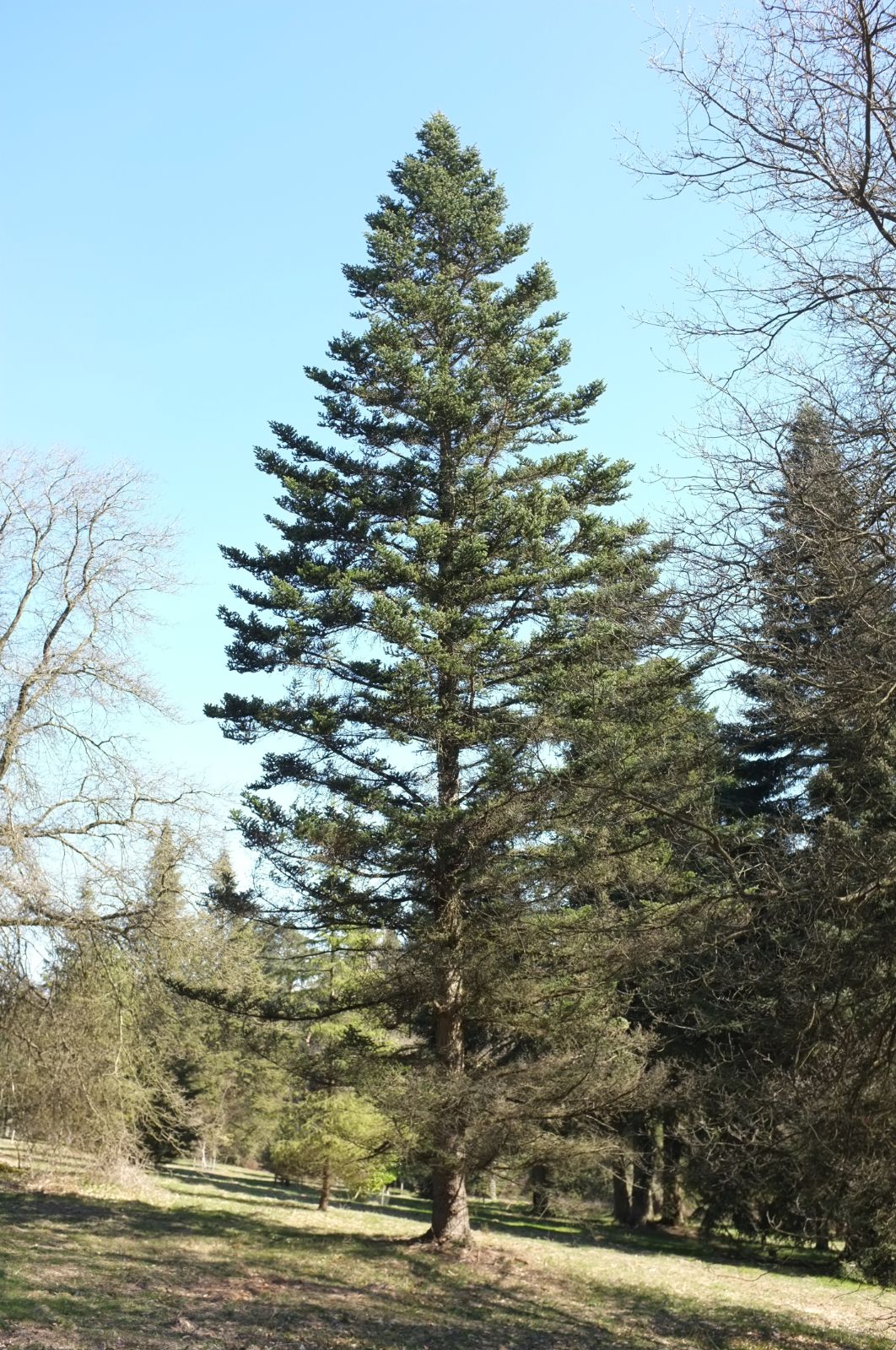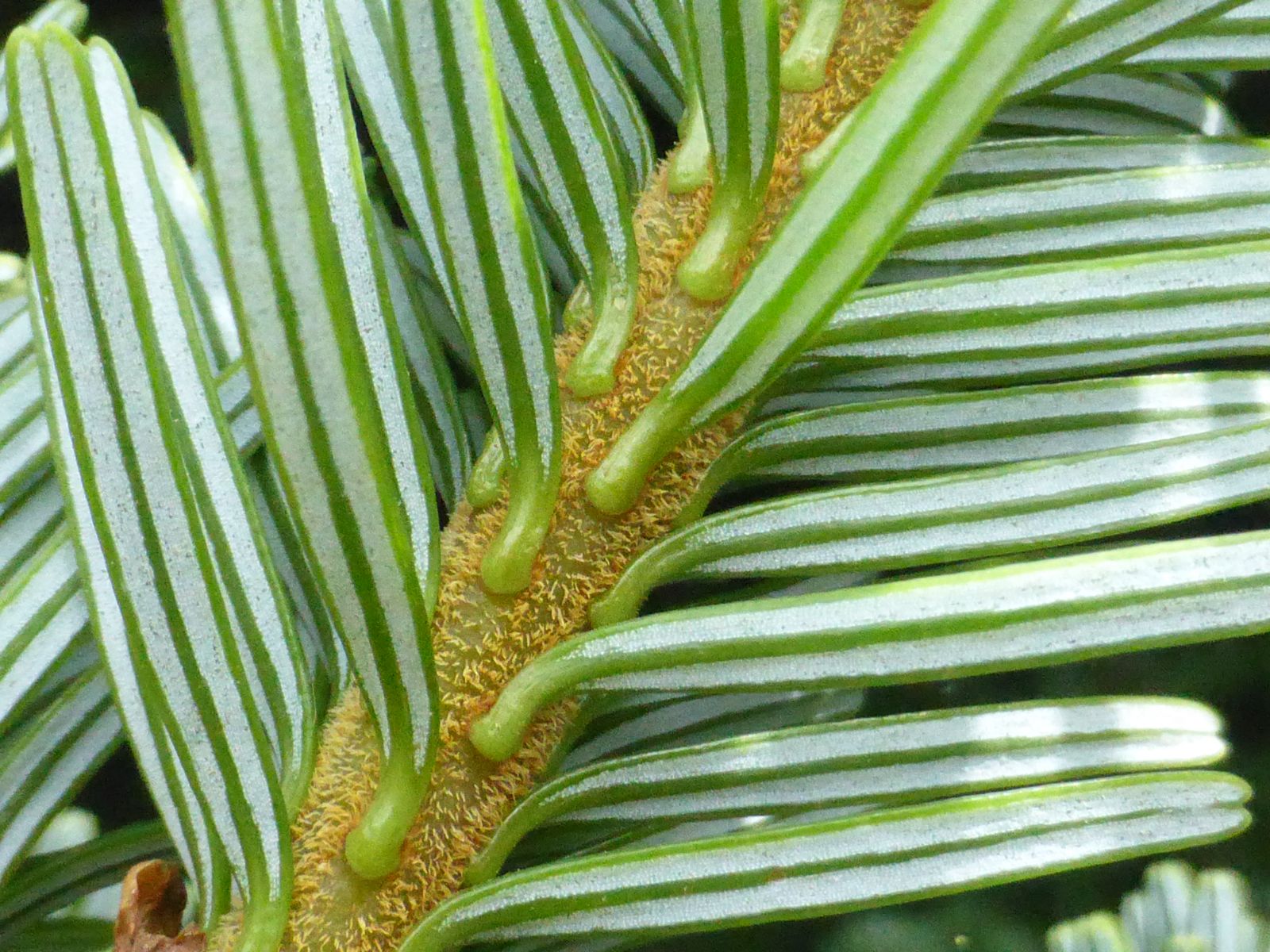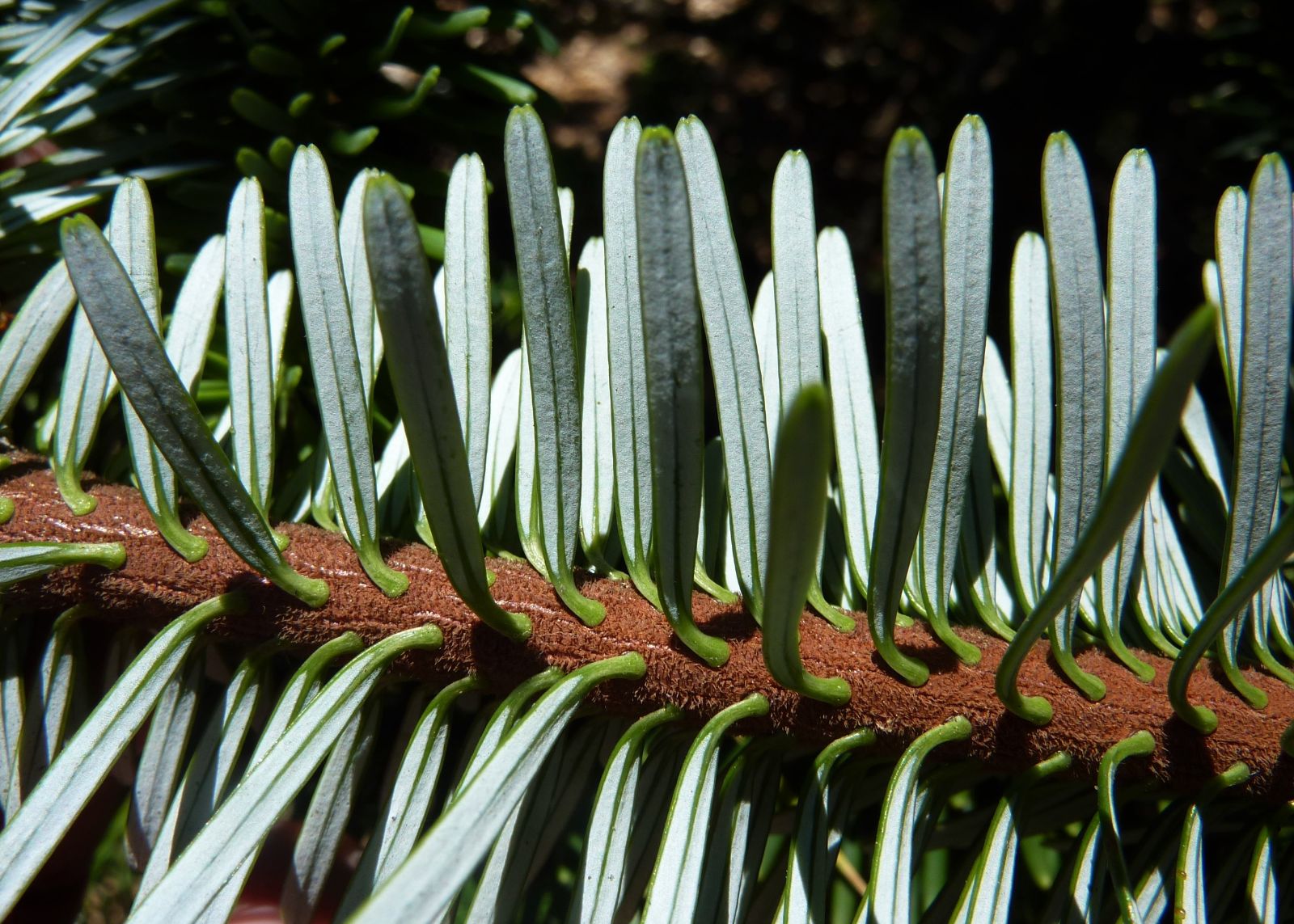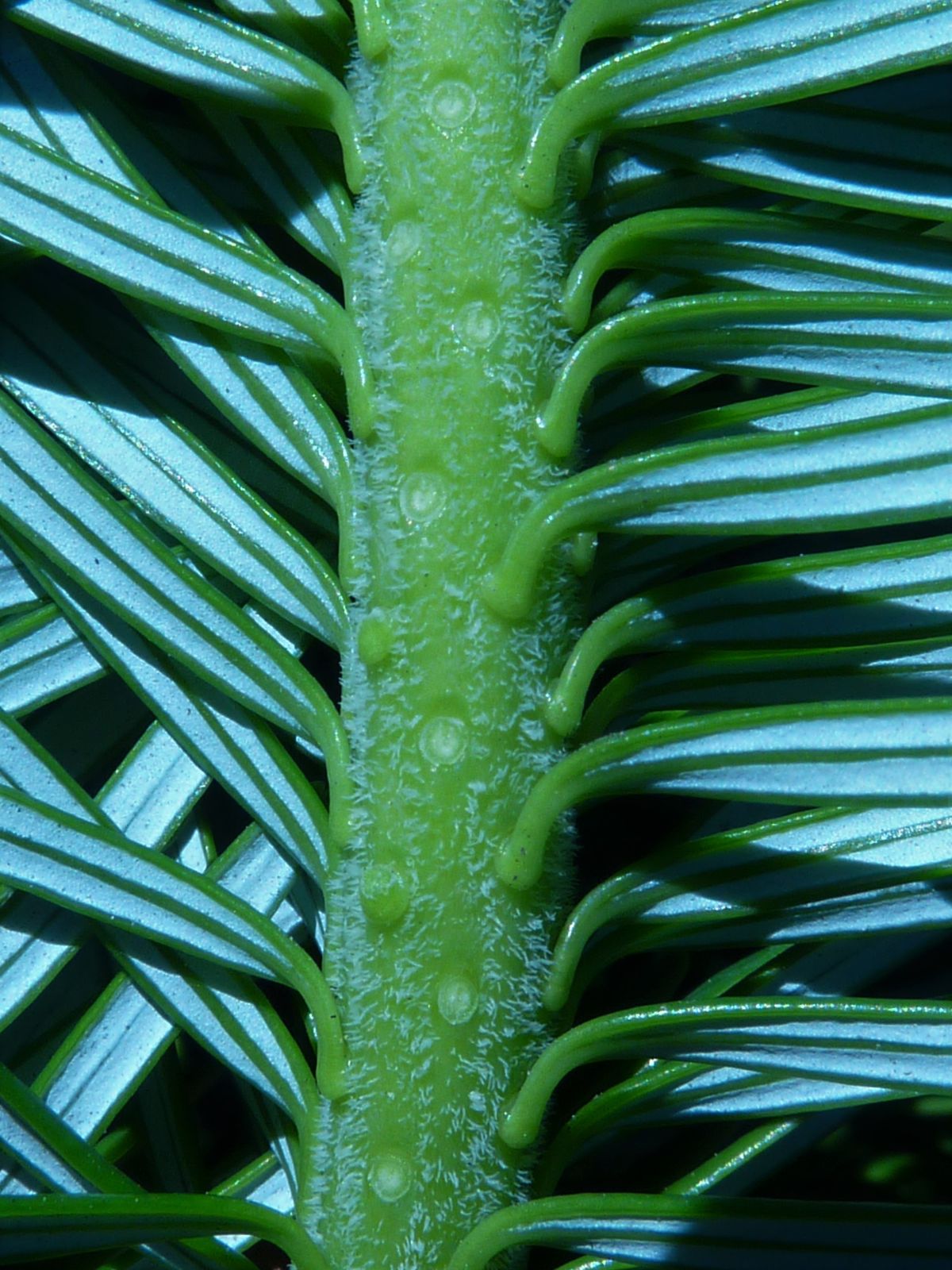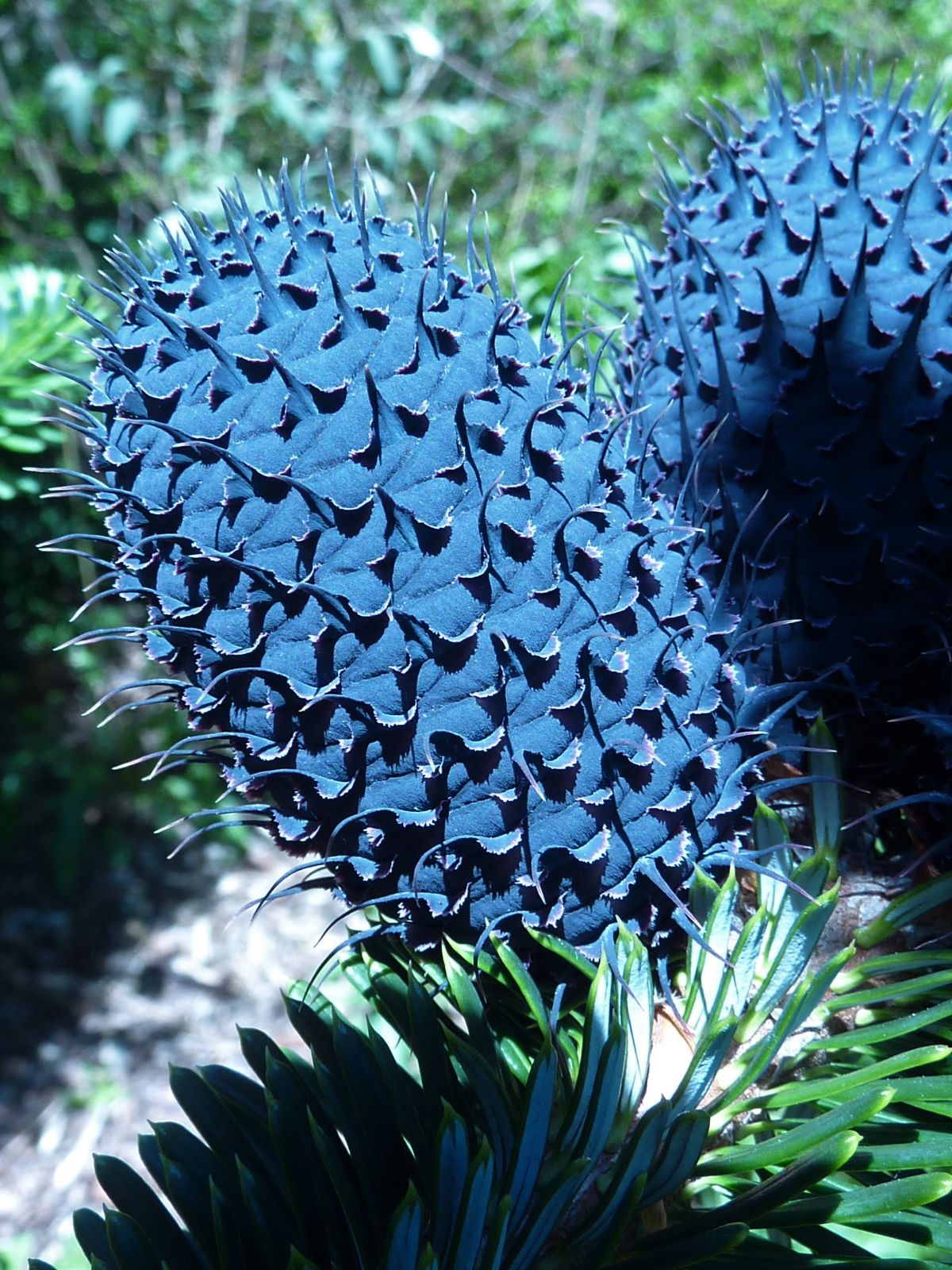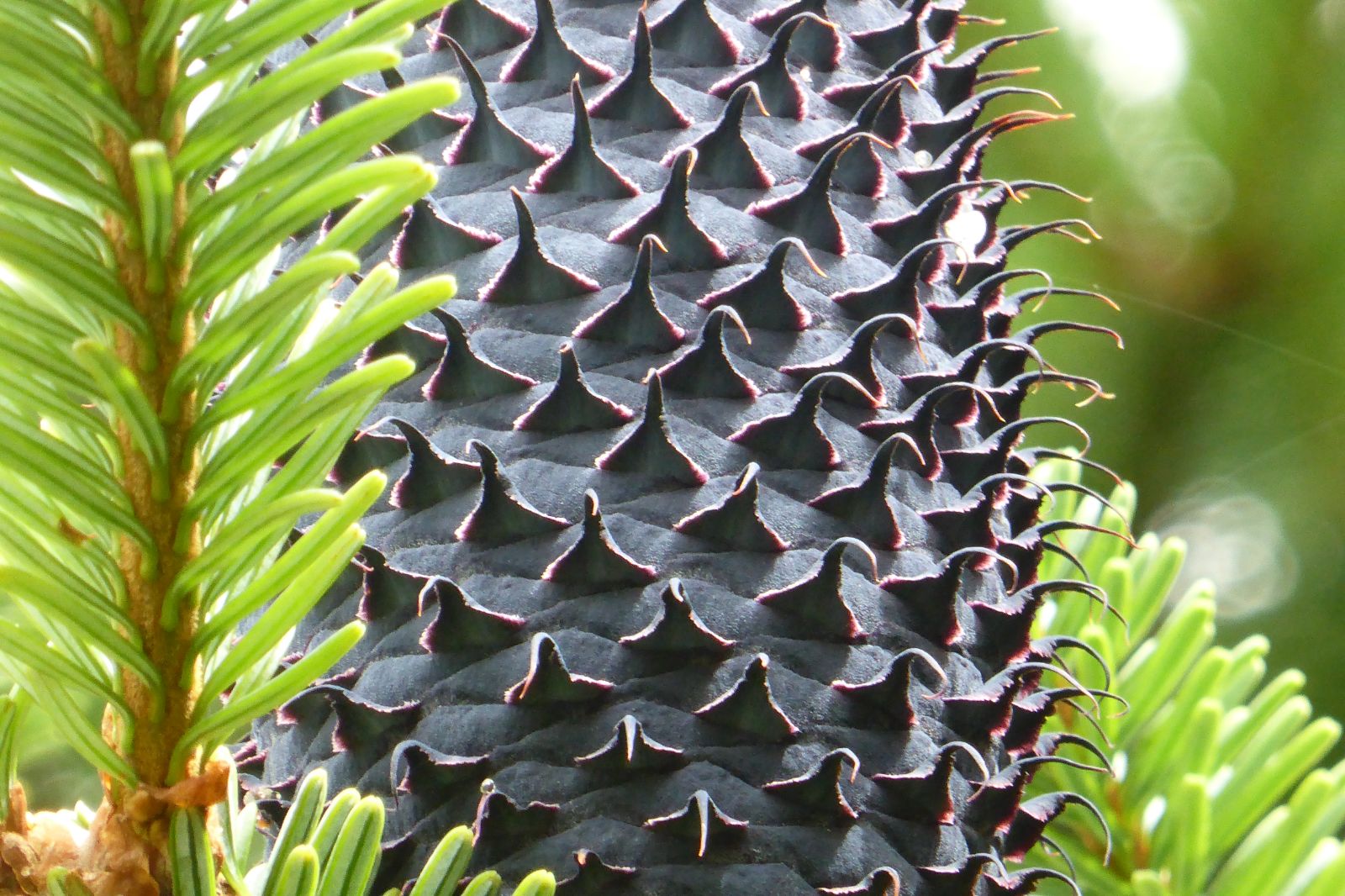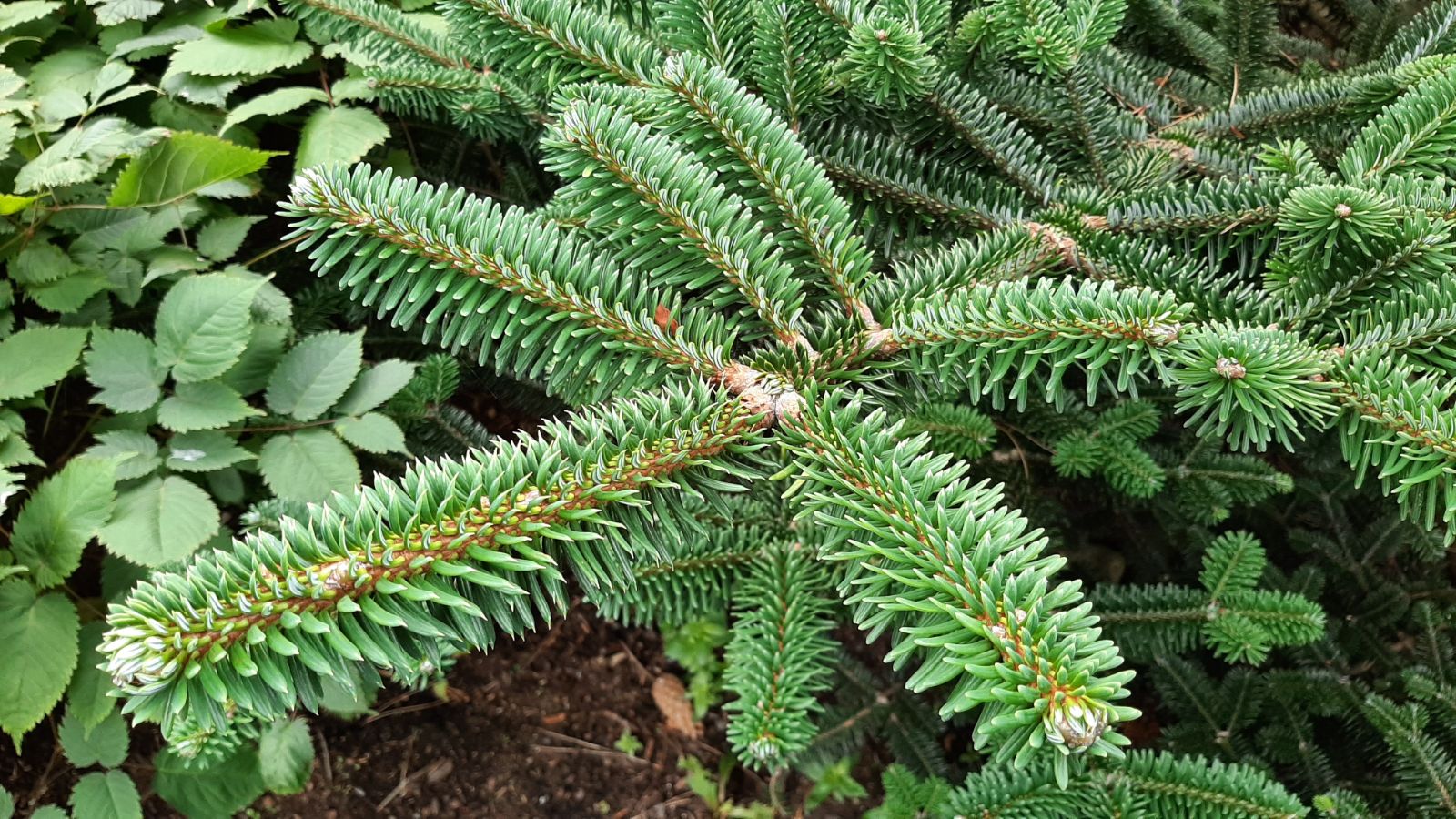Abies georgei
Sponsor
Kindly sponsored by
Sir Henry Angest
Credits
Tom Christian (2021)
Recommended citation
Christian, T. (2021), 'Abies georgei' from the website Trees and Shrubs Online (treesandshrubsonline.
Genus
Common Names
- chang bao leng shan
- ji jian chang bao leng shan
- George Fir
Synonyms
- Abies forrestii var. georgei (Orr) Farjon
- Abies delavayi var. georgei (Orr) Melville
- Abies ferreana var. longibracteata L.K. Fu & Nan Li
- Abies georgei var. smithii (Viguié & Gaussen) W.C. Cheng & L.K. Fu
- Abies forrestii var. smithii Viguié & Gaussen
Other taxa in genus
- Abies alba
- Abies amabilis
- Abies × arnoldiana
- Abies balsamea
- Abies beshanzuensis
- Abies borisii-regis
- Abies bracteata
- Abies cephalonica
- Abies × chengii
- Abies chensiensis
- Abies cilicica
- Abies colimensis
- Abies concolor
- Abies delavayi
- Abies densa
- Abies durangensis
- Abies ernestii
- Abies fabri
- Abies fanjingshanensis
- Abies fansipanensis
- Abies fargesii
- Abies ferreana
- Abies firma
- Abies flinckii
- Abies fordei
- Abies forrestii
- Abies forrestii agg. × homolepis
- Abies fraseri
- Abies gamblei
- Abies gracilis
- Abies grandis
- Abies guatemalensis
- Abies hickelii
- Abies holophylla
- Abies homolepis
- Abies in Mexico and Mesoamerica
- Abies in the Sino-Himalaya
- Abies × insignis
- Abies kawakamii
- Abies koreana
- Abies koreana Hybrids
- Abies lasiocarpa
- Abies magnifica
- Abies mariesii
- Abies nebrodensis
- Abies nephrolepis
- Abies nordmanniana
- Abies nukiangensis
- Abies numidica
- Abies pindrow
- Abies pinsapo
- Abies procera
- Abies recurvata
- Abies religiosa
- Abies sachalinensis
- Abies salouenensis
- Abies sibirica
- Abies spectabilis
- Abies squamata
- Abies × umbellata
- Abies veitchii
- Abies vejarii
- Abies × vilmorinii
- Abies yuanbaoshanensis
- Abies ziyuanensis
Tree to 40 m, 1–1.5 m dbh. Crown broad-conical or pyramidal in young trees, becoming conical to columnar, or often candelabra-like and flat topped in old trees. Bark of young trees smooth for many years, grey-brown, later dark brown and developing irregular fissures on the bole. First order branches long, spreading horizontally; second order branches assurgent. Branchlets assurgent, thick, purplish- or reddish-brown, greying with age, with a persistent, dense covering of rust-coloured pubescence. Vegetative buds globular, 4–10 × 3–7 mm, largest on vigorous leading shoots, red-brown but usually covered with a thick white resin through winter, appearing fused. Leaves densely arranged in multiple ranks either side of shoot, 1.5–3 cm × 2–2.5 mm, base twisted, margins flat or nearly so, apex emarginate, glossy green or bluish-green above, with two white or greenish-white stomatal bands beneath separated by a green midrib. Leaf arrangement variable: on older and shaded trees typically parted above and below the shoot by a ‘V’, apex emarginate; on vigorous young trees often assurgent above the shoots even on sterile branches, with leaves of the most vigorous leading shoots often swept backward with acute apices. Pollen cones 3–4.5 cm long, yellowish with purple microsporophylls. Seed cones short-pedunculate, cylindrical with rounded or flattened apex, 7–11 × 4–5 cm, rich purple-blue with blue bracts when immature, ripening through indigo to dark purplish-brown or -black at maturity; seed scales cuneate-obovate, 2 × 1.8 cm at mid-cone; bracts oblong or spathulate, 2–3 cm long, strongly exserted at all stages of development, tapering or abriptly narrowing to a short cusp. (Farjon 2017; Fu, Li & Mill 1999).
Distribution China SW Sichuan, SE Xizang (Tibet), NW Yunnan
Habitat Mixed forests in mountains, 2500–4200 m asl.
USDA Hardiness Zone 6b
RHS Hardiness Rating H6
Conservation status Least concern (LC)
Taxonomic note Abies georgei is one of several firs in southwest China affiliated with A. forrestii; an overview of this group is given in the article ‘Abies forrestii and its relatives’.
Of the various firs of southwest China Abies georgei is perhaps the most common in cultivation. Various old trees persist in collections across the UK and Ireland, and these have been supplemented by a number of gatherings made in more recent years. It has been introduced multiple times from the Lijiang range in Yunnan, for example, where it gradually replaces A. forrestii above c. 3400 m. It occurs there with Picea likiangensis, Juniperus pingii, J. squamata, Betula calcicola, and sub-alpine Rhododendron species (Debreczy & Rácz 2011). It has often been introduced as A. forrestii (or some permutation thereof) and as A. delavayi, notably by the Alpine Garden Society 1994 expedition to China (ACE), and by Patterson & Main (P&M), collecting for the Royal Botanic Garden Edinburgh where it is consequently well represented. Collections belonging here include: CNW 1005, ACE 2371, 2372, P&M 156, 157, 158, and LPE 92, all from Yulongxue Shan. ACE 1842 and 2094 also belong here, and are traceable to nearby Haba Shan.
Like many of its near relatives A. georgei prefers well drained soils on steep slopes in areas with abundant precipitation and cool summers; as a young tree it abhors shade, and yet requires the company of other trees if it is to achieve its full potential. Young trees at Bedgebury in Kent have withstood several heatwaves and droughts without perceptible injury thanks largely to their youthful vigour; the trade off will likely take the form of a reduced lifespan compared to plantings in cooler and wetter environments. It seems not to be at home in a continental climate; it has largely disappointed in Belgium (C. Crock pers. comm. 2017) and at Gothenburg in Sweden (pers. obs. 2020), though it would likely thrive in cooler parts of the Pacific Northwest of North America but there are few confirmed records from here. Experience at Howick and Pampisford in England suggests it is pointedly calcifuge (pers. obs. 2020). The best trees are doubtless those scattered in collections across the west and north of the UK and across Ireland, but such are the difficulties associated with identification that it seems prudent to avoid citing lists. A remarkable, confirmed example grows at Devonhall in Clackmannanshire, Scotland, 16 m × 0.81 m dbh in early 2021; this tree has developed an extraorindary candelabra-like structure with multiple trunks (pers. obs.). This is not unusual in this species but mature single-stemmed trees are just as frequent; these are typically restricted to the sheltered environs of well-stocked collections with examples in such locations as Bedgebury, Westonbirt, and Benmore. Vigorous young trees can be particularly beautiful and this species’ tendency to produce its highly ornamental seed cones from a young age adds to the appeal; some of the best stands of young trees – mostly grown from the various collections cited above – may be found at the Howick Arboretum and at RBG Edinburgh.
Matthew Orr published the name Abies georgei in 1933, based on material George Forrest had collected on the Jinsha-Mekong divide in Yunnan in 1922 (F 22547). It remained a widely accepted species until c. 1990 when Farjon reduced it to a variety of A. forrestii; a taxonomy still followed by many institutions in our area. However, several major works including the Flora of China (Fu, Li & Mill 1999) and Conifers Around the World (Debreczy & Rácz 2011) continue to afford A. georgei species rank and this approach is followed here, for various reasons set out in the genus article and in the introductory article ‘Abies forrestii and its relatives’.
When A. georgei is afforded species rank the variety smithii is usually placed here, rather than under A. forrestii. These two taxa have in common conspicuously hairy shoots (cf. glabrous shoots in A. forrestii) and prominent, strongly exserted bracts in mature seed cones (cf. paritally exserted and somewhat sparse on the cone surface) (Fu, Li & Mill 1999); these character states simultaneously unite the entities georgei and smithii whilst distancing both from forrestii. Whichever taxonomy is applied to this group of firs the distinction between georgei and smithii is much less clear; so much less, in fact, that in this treatment var. smithii is considered not to merit distinction and is sunk into synonymy with A. georgei. The ostensible difference is in the shape of the exposed part of the bracts on the seed cones; tapering to a long cusp in georgei, and narrowing abruptly to the cusp in smithii (Fu, Li & Mill 1999). The holotype of A. georgei at Edinburgh (E00005354) has partially intact cones clearly showing the exserted bracts gradually tapering to the cusp, but other collections cited in Orr’s protologue have bracts of the other type. Cultivated plants studied during research for this account also exhibit both types: ACE 2094 was collected on Haba Shan in Yunnan in 1994; plants growing at RBG Edinburgh exhibit bracts abruptly narrowing to the cusp, but trees at the Howick Arboretum have bracts gradually tapering (pers. obs. 2009–2020). The combined evidence for variation both in the type material and in living plants of traceable wild origin strongly suggests that var. smithii does not merit recognition. (Incidentally, if in the application of this proposed taxonomy an institution agreed that smithii / georgei represented only one taxon, but preferred to maintain this entity at varietal rank within a broader and more variable A. forrestii, then A. forrestii var. smithii would become the oldest available name and therefore the correct one, with A. georgei reduced to synonymy).
Also included in synonymy here is the taxon A. ferreana var. longibracteata L. K. Fu & Nan Li. This has never been synonymised with A. georgei before, but this is deemed justifiable based on virtual examination of the type specimen (PE00005236; pers. obs.). This name was published in 1997 based on material gathered from Zhongdian in NW Yunnan in 1962, with ‘distinctly exserted, acuminate bract scales that are lanceolate at the apex and neither reflexed nor recurved’ (Fu & Li 1997). While the authors amply demonstrate its distinctiveness from typical A. ferreana (with ‘usually reflexed or recurved bract scales that are rounded at the apex with an acute cusp’ (Fu & Li 1997)) they do not offer any means of differentiation from A. georgei, and indeed their description of the acuminate bract scales with a lanceolate apex matches A. georgei exactly. The type specimen in Beijing (PE00005236) closely matches F 22547 in Edinburgh (E00005354) and does not exhibit any characters that justify separation from A. georgei.

